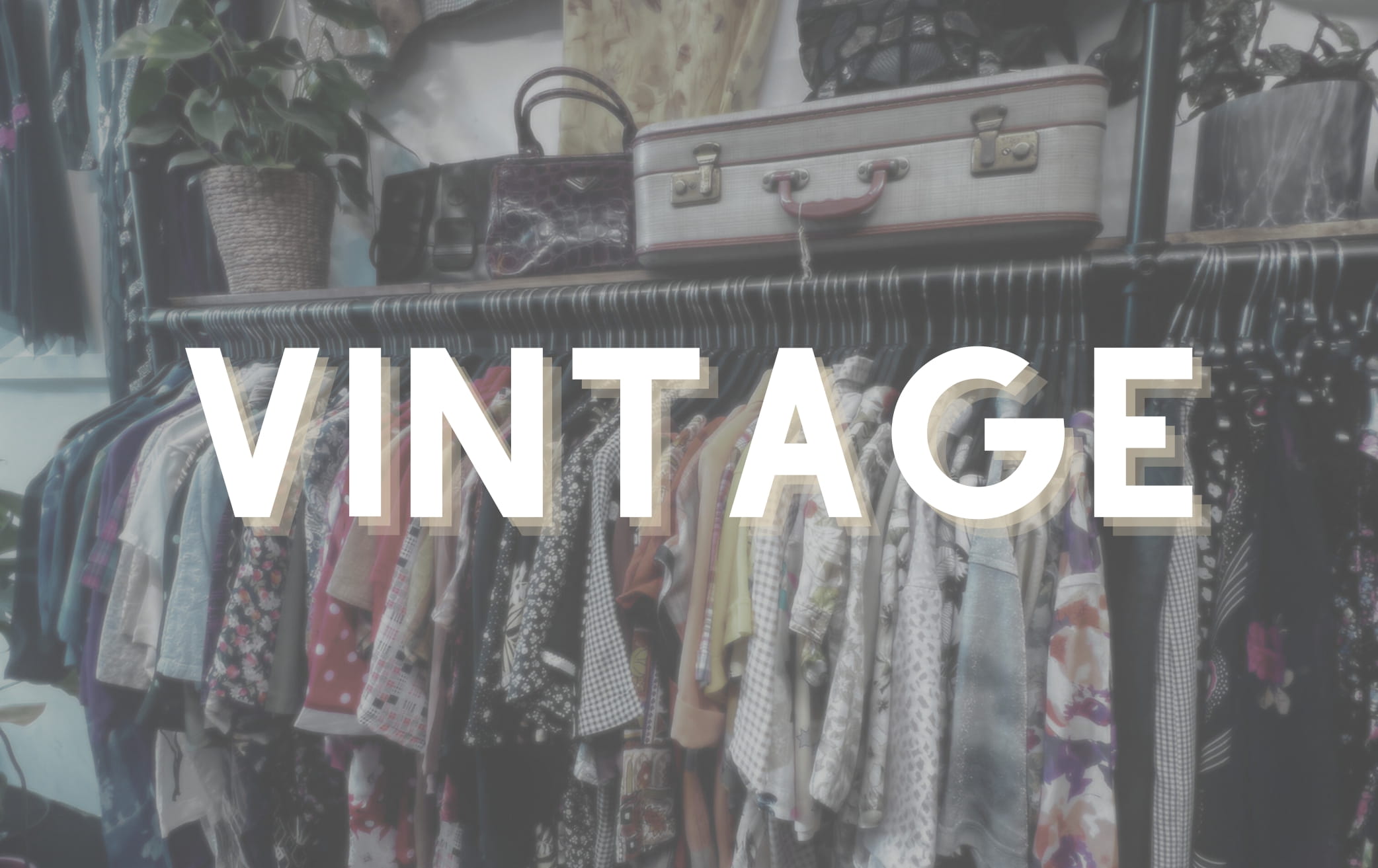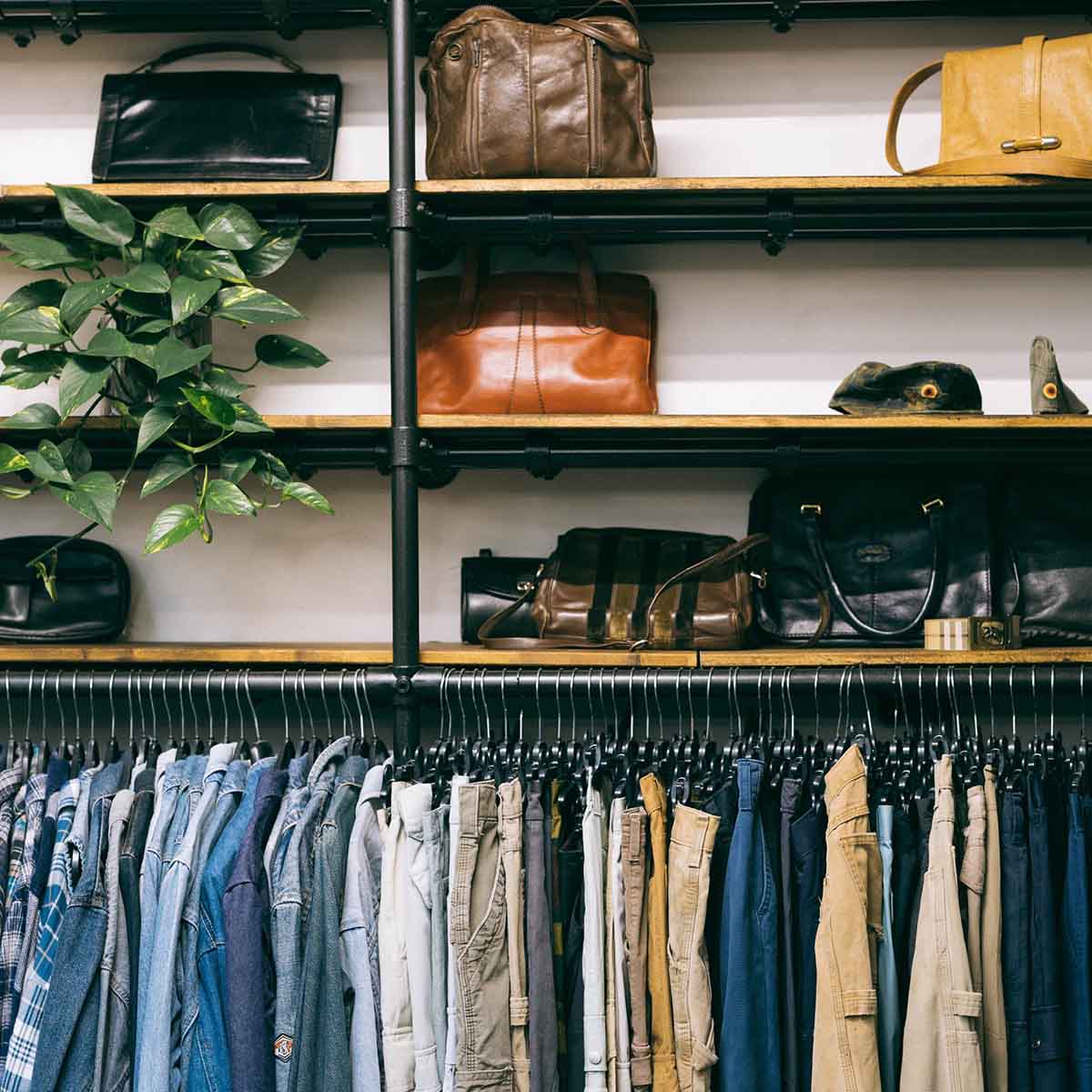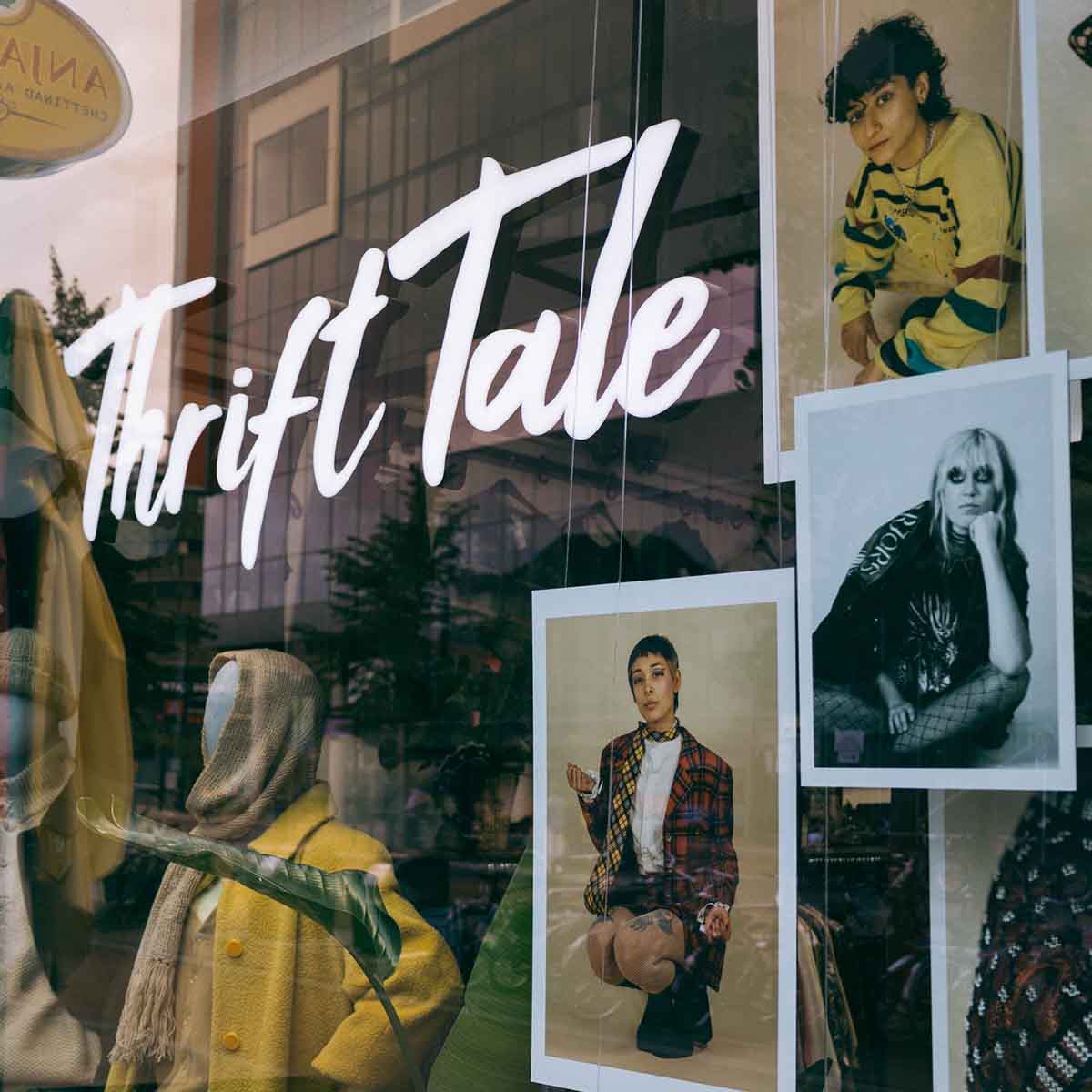
Everything You Need To Know Before Buying Vintage Clothing
Starting to buy and wear vintage clothing can sometimes seem overwhelming. After all, it’s a completely different experience to shopping for mall or high street fast fashion! You have to learn about sizing, fabrics, styles, care; and how can you even be sure it’s real vintage anyway?
So here’s everything you need to know before you start buying and wearing vintage clothing:

1. Vintage Clothing Sizes
-
Vintage clothing sizing is not the same as modern
Sizes have changed significantly over the years. A vintage size can be 2-4 numerical sizes smaller than modern sizes. For example, a vintage woman’s size EU 40 can be more comparable to a modern EU 36 or 34; a vintage US 12 is more like a modern US 4.
-
Measure yourself before buying vintage clothing
Before going shopping for vintage clothes, measure yourself at home. Or measure the clothes that fit you best to use as a comparison. At ThriftTale, we measure every item and mark it with the modern size it would fit today. So, you can shop vintage online without having to guess.
-
Try it on
If you are shopping in person, always try on vintage clothing before buying it, even if you think you know your size. Not only can the size labels be misleading on vintage clothes, but so can the way the clothes fit due to the fabric and styles of the decade.
2. Understanding Vintage Fabrics
Modern clothes are usually made from a synthetic material or a blend. Modern synthetics like polyester and acrylic can create fabrics that look and feel like anything from cotton to wool or silk. There’s also usually some elastane woven in for stretch.

However, vintage fabrics can have very different qualities.
- Vintage polyester from the 50s, 60s, and 70s is thick and durable. It drips dry quickly without needing ironing and holds its structure and color even through decades of washing. But it’s not breathable, and some kinds can be itchy. It is not good for hot or humid weather!
- If you are looking for summer clothes, check that they are made from breathable fabrics like cotton, linen, or viscose (Rayon).
- Vintage denim is often pure oven cotton, with no stretch, like modern denim with elastane.
3. Vintage Clothing Condition
Vintage is, of course, old, and usually, it's also worn. The condition can be hit and miss on each garment. It’s normal to have some wear and tear on edges; some fabric might pill, can rip, buttons fall off, and stains and even cigarette burns are surprisingly common. If you’re shopping in person, check the garment thoroughly to make sure you're happy with it. Online, check the description and photos so you know what to expect.
Stains can be removed, seams can be stitched, and buttons replaced. Even those musty smells you get from clothes that have been stored for a long time can be removed with a soak in vinegar, vodka, or a special detergent product to remove odors.
Buying vintage clothing that’s worn or in poor condition can be a great way to get cheap bargains you can fix up quickly.
4. How to Tell If Clothing Is Really Vintage?
When shopping for vintage fashion, you don’t want to end up buying something that’s actually modern, cheap, fast fashion disguised as vintage. Unfortunately, it’s become increasingly common these days for sellers on second-hand marketplaces like Vinted and Depop to cut the labels out of clothes from places like Shein and sell them as authentic vintage.
-
Always check for labels!
If you shop in person, immediately check the labels. True vintage clothes usually only have a label at the neck or no label at all. Vintage labels can look very rough, hard to read, faded, and crumpled. The text can often be in italics. After the 50s, many vintage clothes labels mentioned the trademarked name of the fabric used front and center as a selling point. Some vintage clothes are handmade and, therefore, have no labels at all.

If there is no label, look at the garment's construction, including the stitching of the seams and the fastenings. Metal zips are more likely to be used on vintage clothing, as plastic zips came around later. Instead of zips, you’ll find buttons or metal hook closures. If the seams and fastenings look too neat and too modern - it likely is. Vintage clothing will always be a bit rougher around the edges compared to modern techniques.
-
Checking if clothing you’re buying online is really vintage
If you are still unsure or can’t see these details on the clothing, then it’s time to reverse image search. Take a photo of the item, or if shopping online, screenshot or right-click the image, then choose “search image with Google” or drop the photo into the Google search box. This will bring up any existing images of the item online. If it’s modern fast fashion, you will find out quickly in the results. If it’s true vintage, there’s unlikely to be any matches, or matches that prove that it is vintage.

5. Does Vintage Clothing Need Special Care?
Some vintage clothing needs special care, and some of it is even more durable than modern clothing. Check any labels to find out the fabric. If it’s vintage polyester, you can pretty much do anything to it, and it will remain unscathed!
But vintage silk, lace, leather, suede, and cotton will require a much more careful approach. Cotton can shrink in the wash; silk must be dry-cleaned professionally, and suede and leather will need careful care, storage, and cleaning.

6. The Cost of Vintage Clothing
The rarer the piece, of course, the more expensive it can be. But you can be surprised by how affordable vintage clothing can be.
Expect to pay more for clothing from the 30s to the 50s, but from the 60s onward, clothing started to be mass-produced for fashion stores. This means you’ll find far more options at lower prices for these decades.
Vintage clothing can be anywhere from cheaper than fast fashion to hundreds or thousands. It depends on the rarity and condition of each piece, and how in-demand the style is.
You can often score vintage clothing for less than the cost of current trends, but if you do find an expensive piece, the good thing is that you know it’s worth investing in. The quality of vintage clothing is far superior to modern clothes, meaning it will last you years. Not only that, the feeling of owning something unique and worth more than anything. So, whether you spend a little or a lot on vintage, you’re investing in something worth more than its monetary value. It’s something to keep, to pass on, or sell on. It will always retain value.
7. Where Can You Buy Authentic Vintage Clothing?
You can shop for vintage clothing in thrift stores, special vintage stores, estate sales, flea markets, and online second-hand marketplaces. It’s always a surprise what you’ll find, so go in with an open mind!
A thrift store that works on donations might not have many true vintage pieces these days. The best success can be in an area with a wealthy and aging demographic, where you will likely find donations from estates.

If you want a vintage shopping experience that’s guaranteed to only have the good stuff without sifting through rails of fast fashion donations, then head to a vintage clothing store. These can sometimes be specialized in certain decades or be general vintage clothing stores carrying clothes from any era and style.
At ThriftTale, you’ll find a selection of the best authentic vintage styles in the store to browse through and try. With every item specially sourced and hand-picked, it’s all vintage gems without the filler.
You can also shop for vintage clothing online at ThriftTale, which has a huge selection of vintage clothing that’s updated weekly.
Is Vintage Clothing Worth It?
Buying vintage clothing can be a bit more work than simply walking into any fashion store and grabbing your size off the rack, but it is always worth it. You get to own and wear unique clothes that no one else will have, that are a quality far better than you can buy these days. And you get to feel that little bit extra special when you’re wearing it. Vintage clothes are something you'll feel proud of owning, wearing and you'll want to keep it for decades to come.
Visit our vintage stores in the Netherlands, or shop online at thrifttale.com




